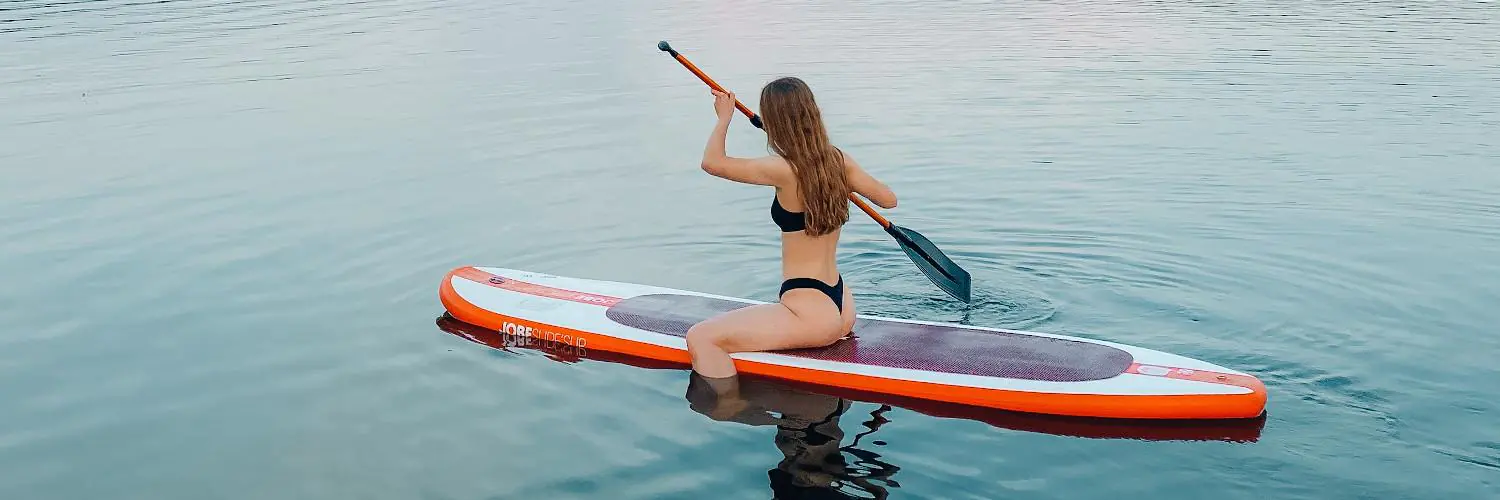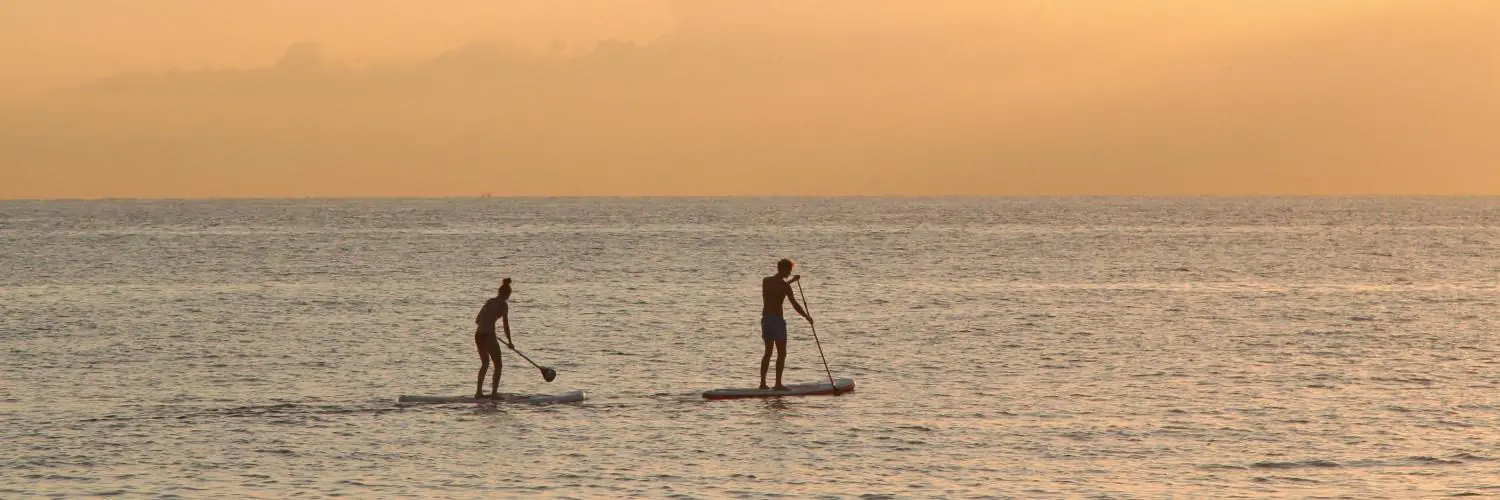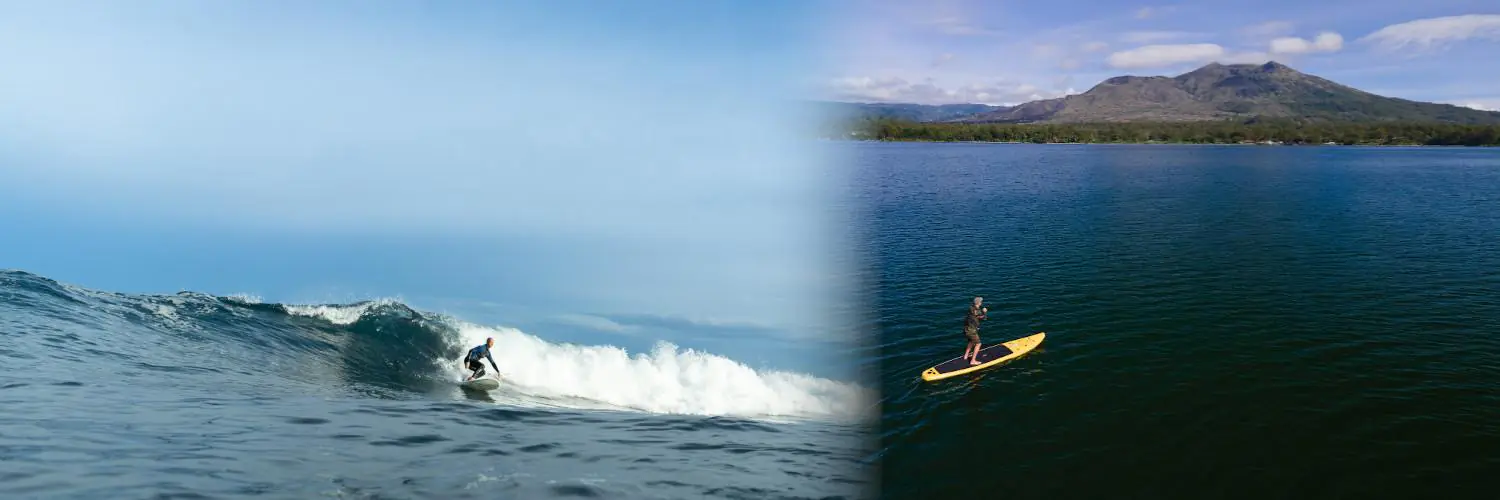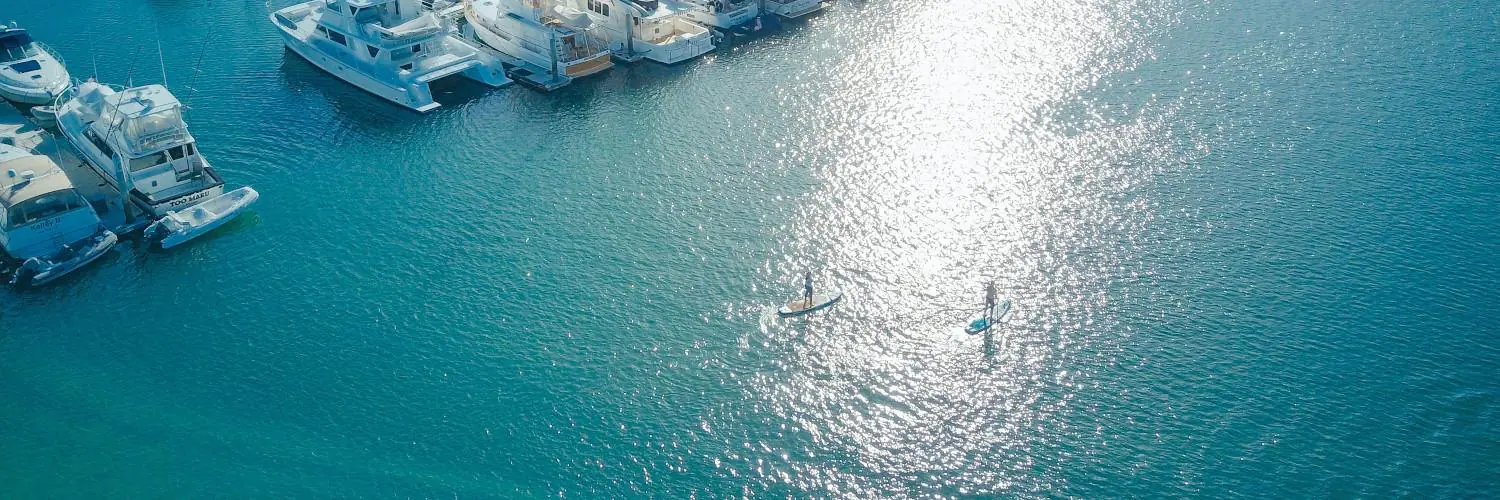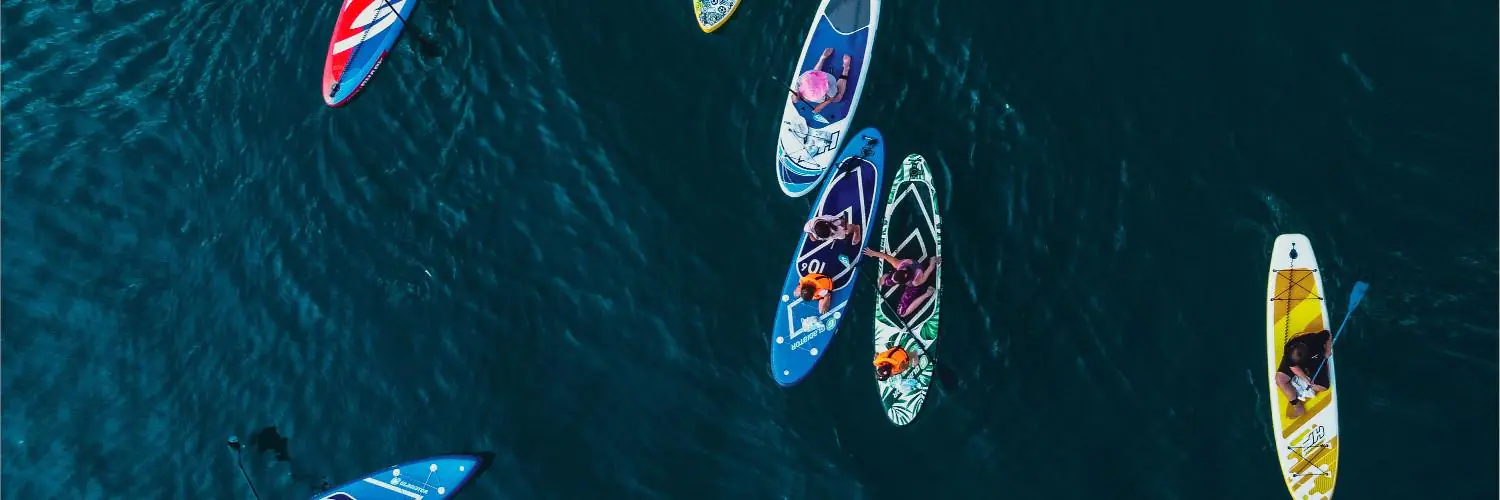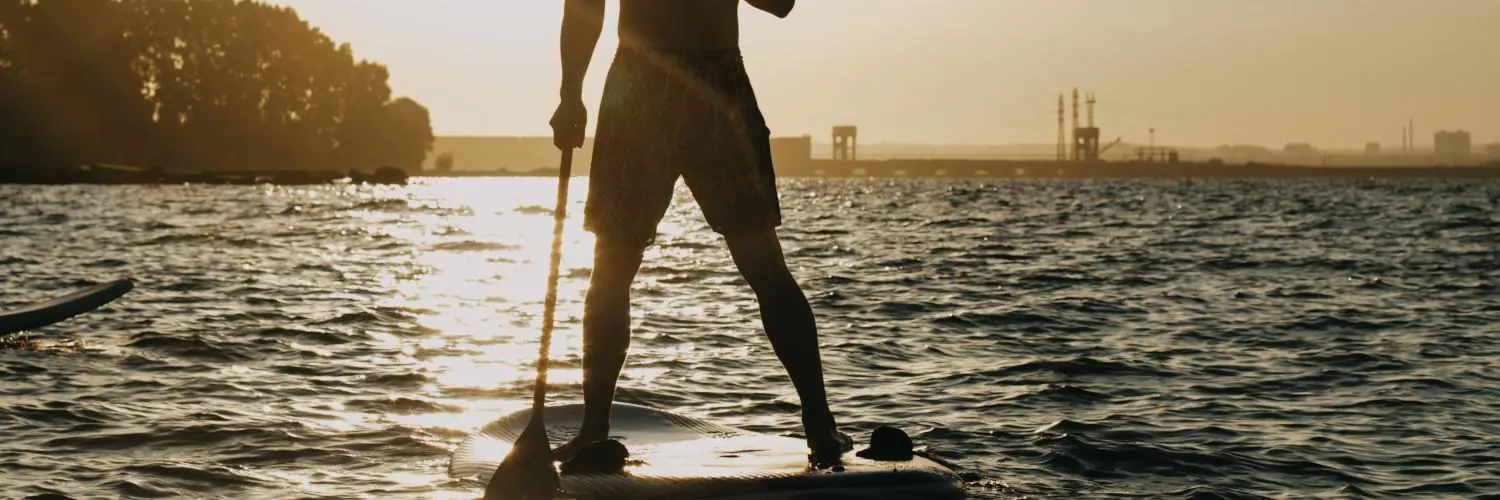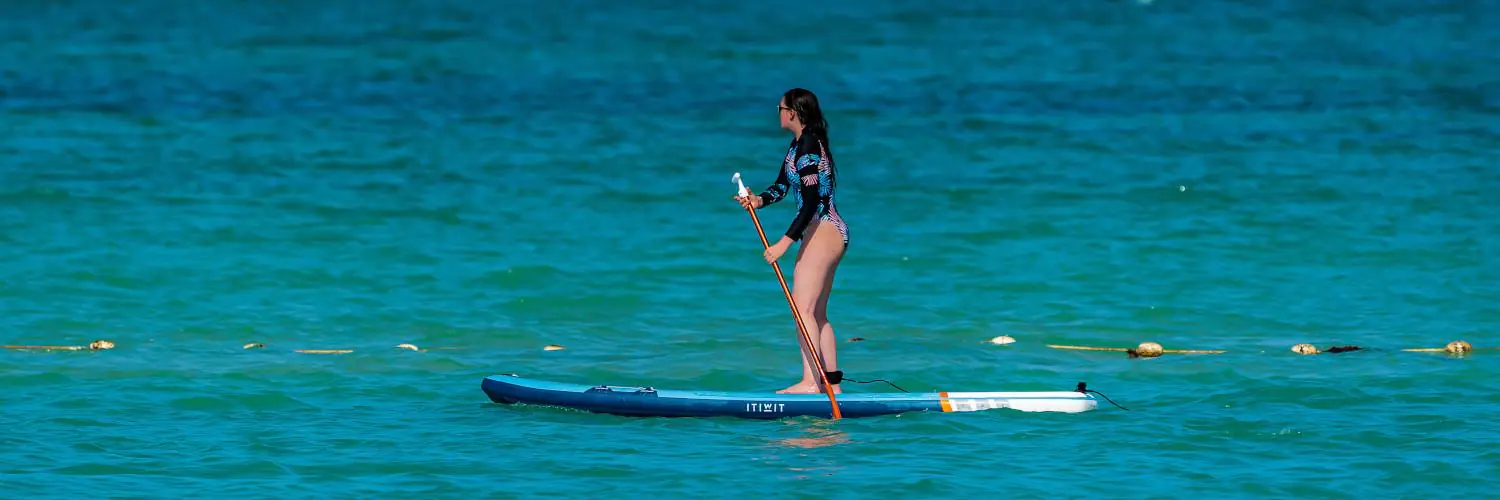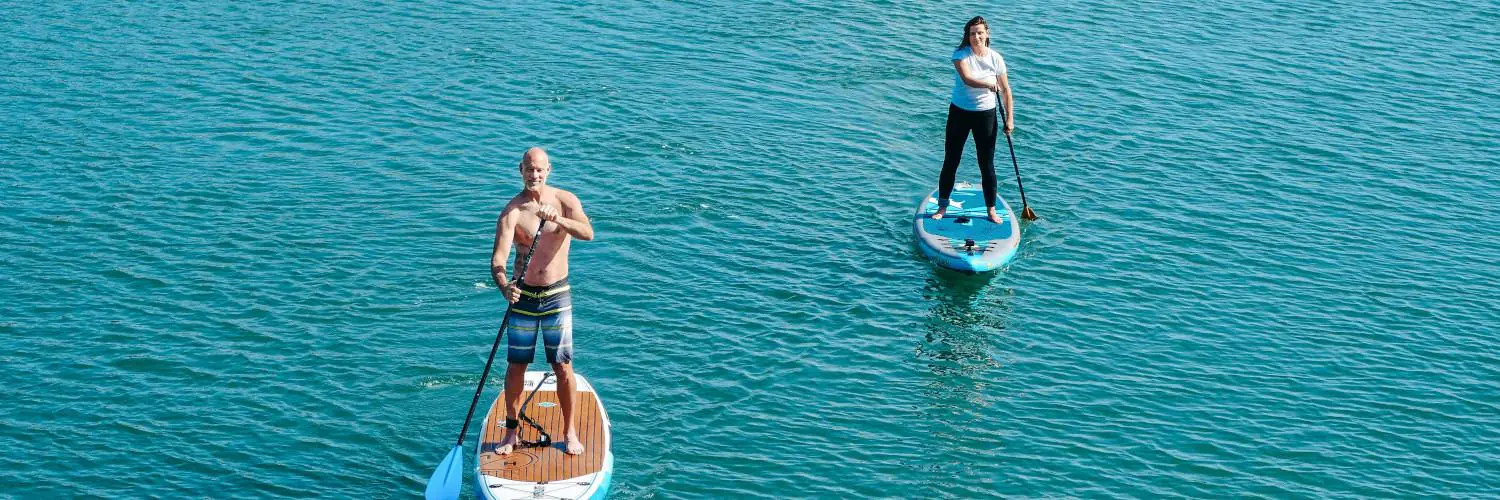What size stand up paddle board you need depends upon a number of factors such as your weight, paddling skills, experience, and preferences. While shopping for a paddle board, you will want a board that provides enough flotation and stability for your skill and body weight, but paddles fast enough for a satisfying experience and suits the type of paddling you will be doing. Here are few of the guidelines which should be kept in mind while opting for a paddle board of your choice.
Table of Contents
For Stability
The most popular SUP boards for general use are 10-11 feet in length and between 32 and 34 inches wide. If stability is a high priority for you, you’ll want to look for a board that is 33-34 inches wide. You can go wider, but you may end up with a board that is sluggish and less fun to paddle.
For Maneuverability
If portability and maneuverability are priorities, or if you weigh less than 150 lb, you may want to go shorter than average and opt for a board in the 9’6″ length range. 9’6″ boards are a lot of fun and can be plenty stable if the design is right. Just make sure the width is appropriate for the length, about 30-32 inches. A 9’6″ board that is wider than 32 inches will be slow to paddle.
For Speed
If speed and straight tracking are priorities, consider a 12’6″ touring or race board. 32 inches is a good width for a stable touring board. Race boards can be 28″ or even 26″ narrow, which makes them very fast but less stable. 30″ is a common compromise width for a 12’6″ board that may be used for both touring and racing. Given the popularity of SUP touring, 12’6″ should be a very popular length, but some buyers shy away from this length due to storage concerns. However, if you go with an inflatable model, the extra length does not pose a storage issue and you can expect excellent performance from a quality inflatable touring SUP.
For Various Uses
There are also specialized shapes for specific uses. 36 inch wide boards are commonly used for running rapids but are too wide for general paddling, as they are slow and you have to reach over more to keep your stroke vertical. Boards under 9 feet in length are usually designed for ocean or river surfing, but the lack of volume makes it harder to stay balanced for general paddling.
Advantages of inflatable Paddle Boards over Hardboards
You should also be aware of the stability advantage of inflatable boards over hardboards. Inflatables have a uniform thickness from side to side and nose to tail, making them considerably more stable than similarly sized hardboards. Hardboards are sculpted to reduce weight and optimize race and surfing performance, but they provide less stability and buoyancy for the recreational paddler. Board thickness is just as important as length, width, and outline shape. Inflatable SUP boards for all-around paddling, especially for riders who are developing their skills, should generally be 5 inches thick. An exception to this would be heavier paddlers (225 lbs and up) who might benefit from the extra volume of a 6-inch thick board, making the extra bulk and other disadvantages of a 6-inch board a reasonable tradeoff.
Settling on a board size is just the beginning of your board purchase research. Don’t buy a board without first understanding the wide range of available inflatable SUP board shapes, constructions, and fin systems. The best way to gain this understanding is to spend some time studying a comprehensive and technically advanced buyer guideline. While there are various factors that influence the ideal length, width, and thickness you should be looking for in a paddle board, the table below should get you in an appropriate range if you are a beginning paddler looking for a board for all-around use. Here is a table that might serve as a guide for specifications of the board according to your body weight.
| Paddler Weight | SUP Width | SUP Thickness | SUP Length |
|---|---|---|---|
| Under 125 lbs (56kg) | 31-32″ | 5″ | 9’6″-10’9″ |
| 125-150 lbs (56-68 kg) | 31-32″ | 5″ | 9’6″-10’9″ |
| 150-175 lbs (68-79 kg) | 31-33″ | 5″ | 10’0″-12’6″ |
| 175-200 lbs (79 – 90 kg) | 32-34″ | 5″ | 10’0″-12’6″ |
| 200-225 lbs (90-102 kg) | 32-34″ | 5-6″ | 10’0″-12’6″ |
| 225+ lbs (102 kgs +) | 32-34″ | 6″ | 10’0″-12’6″ |
For Advance Paddlers
Advanced riders tend to choose boards based on specific performance characteristics more than size and weight factors. Keep in mind for choosing a SUP board that will continue to be a good fit for you as an all-around board as your skills progress. You may notice that length recommendations do not vary much between beginning and advanced paddlers. This is because, while length is a key element in the performance and intended use of a paddle board, it is less directly related to rider weight and is more affected by other factors such as those below:
- Paddler height and relative reach
- How you intend to use the board
- The range of water and wind conditions you expect to encounter
- Who else might be using your board
- Your likelihood of having passengers on board (small children and pets)
Knowing the range of length, width, and thickness you are looking for in an inflatable SUP is an important step in the buying process, but there is a lot more you’ll want to consider before deciding on a board to purchase.
| Paddler Weight | SUP Width | SUP Thickness | SUP Length |
|---|---|---|---|
| Under 125 lbs (56kg) | 29-32″ | 4-5″ | 9’6″-10’9″ |
| 125-150 lbs (56-68 kg) | 30-32″ | 5″ | 9’6″-11’0″ |
| 150-175 lbs (68-79 kg) | 30-32″ | 5″ | 9’6″-12’6″ |
| 175-200 lbs (79 – 90 kg) | 30-33″ | 5″ | 10’0″-12’6″ |
| 200-225 lbs (90-102 kg) | 30-34″ | 5-6″ | 10’0″-12’6″ |
| 225+ lbs (102 kgs +) | 32-34″ | 6″ | 10’0″-12’6 |

